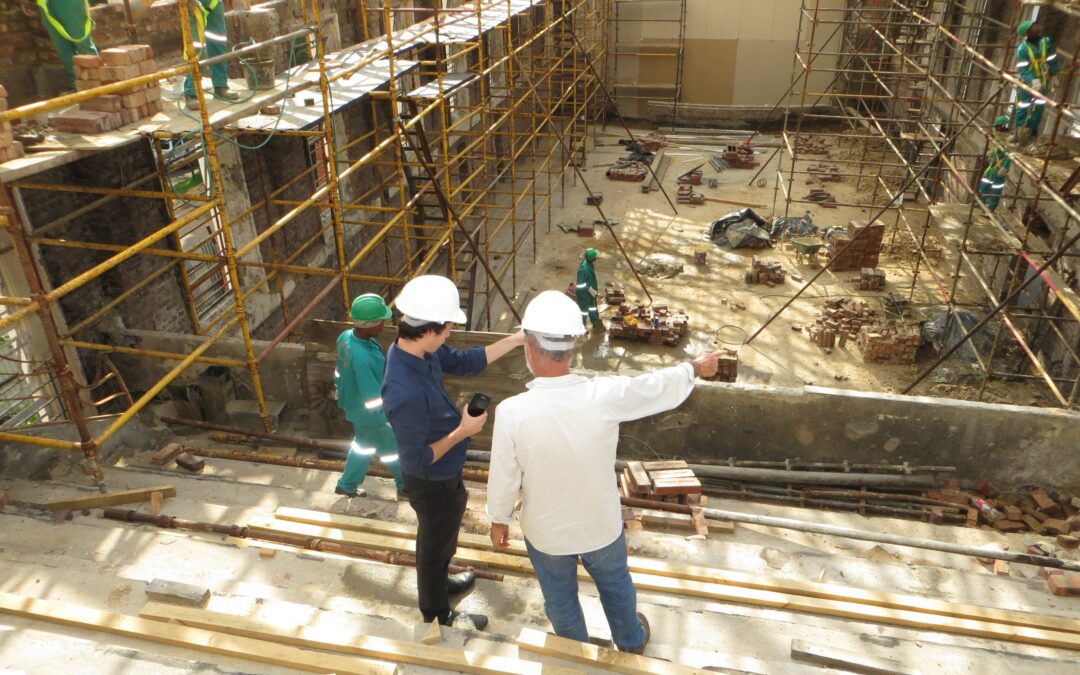Did you know, 5,333 workers died on the job in 2019 nationwide? About 20% (1,061) of worker fatalities in private industry in 2019 were in construction – accounting for one in five worker deaths. However, we don’t need stats to convince you that construction is one of the most dangerous professions. Construction workers engage in many activities that may expose them to severe hazards, such as falling from rooftops, unguarded machinery, being struck by heavy construction equipment, electrocutions, silica dust, and asbestos. Despite these potential risks, construction workers deserve a safe working environment. This blog post will discuss some of the most common Colorado construction injuries and how you can keep yourself safe while at work.
Slips, Trips, and Falls
Slips, trips, and falls (STFs) make up most workplace and construction injuries. According to the National Safety Council, in 2020, 805 workers died in falls, and 211,640 were injured badly enough to require days off of work. In addition, a worker doesn’t have to fall from a high level to suffer fatal injuries.
How to prevent slips, trips, and falls:
Remember: slips, trips, and falls are 100% preventable. Whether working from a ladder, roof, or scaffolding, it’s essential to plan, assess the risk, and use the right equipment. Here are some tips for creating a safer environment to prevent STFs:
- Determine if working from a height is necessary or if there is another way to do the task safely.
- Make sure walking areas are free of liquid, grease, or wet areas.
- Clean up, report spills immediately, and be aware of unobstructed views in your walking path.
- Ensure you have proper lighting in your work area to see any obstacles in your path.
- Keep your workplace clean and tidy.
- Do not carry anything that obstructs your view.
- Do not jump or run in the construction area.
Failure to Wear Proper Protective Gear
According to a survey about worksite accidents and injuries conducted by the Bureau of Labor Statistics (BLS), 84% of all workers who suffered head injuries were not wearing head protection. The construction industry is highly hazardous and comprises a wide range of activities involving construction, alteration, and/or repair, which is why it’s essential to wear your protective gear and that it adequately functions.
How to prevent common injuries
With the Occupational Safety and Health Act of 1970, Congress created the Occupational Safety and Health Administration (OSHA) to ensure workers’ safe and healthful working conditions by setting and enforcing standards and providing training, outreach, education, and assistance. Colorado must follow the Federal regulations set by OSHA regarding personal protective gear and workplace safety. Below are just some of the rules in place when it comes to protective construction gear. A full list can be found on the OSHA website.
- Head Gear: Employees working in areas where there is a possible danger of head injury from impact, or from falling or flying objects, or electrical shock and burns, are to be protected by protective helmets.
- Hearing Protection: Wherever it is not feasible to reduce the noise levels or duration of exposure ear protective devices shall be provided and used.
- Eye Protection: The employer shall ensure that each affected employee uses appropriate eye or face protection when exposed to eye or face hazards.
Electrocution
If you work with electricity on your construction site job, you must take the appropriate safety measures to protect yourself. Of the Fatal Four hazards, electrocution hazards are the third highest cause of fatalities among construction workers. According to OSHA, electrocution injuries accounted for 82 construction worker deaths in 2016, 8.3% of the 991 fatalities caused by construction site hazards.
How to prevent injury due to electrocution
Various possible solutions may be implemented to reduce or eliminate the risk of injury associated with electrical work. Examples of solutions include insulation, guarding, grounding, electrical protective devices, and safe work practices. The following are just some of the ways you can better set up your environment for safety.
- Do not work on new and existing energized (hot) electrical circuits until all power is shut off.
- Have an effective Lockout/Tagout system in place.
- Frayed, damaged or worn electrical cords or cables are promptly replaced.
- Protect flexible cords and cables from damage. Sharp corners and projections should be avoided.
- All electrical tools and equipment are maintained in safe condition, checked regularly for defects, and taken out of service if a defect is found.
- Ensure that ladders, scaffolds, equipment, or materials never come within 10 feet of electrical power lines.
If you were involved in a construction-related injury while on the job reach out to the experts at Cave Law today. Call us for a free consultation at 303-680-9000 or fill out a contact form to have us call you, and we will answer all your questions concerning your work-related injury and worker’s compensation.





